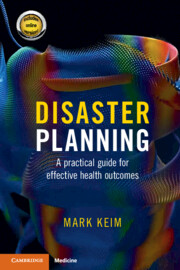Book contents
- Disaster Planning
- Disaster Planning
- Copyright page
- Dedication
- Epigraph
- Contents
- Foreword
- Preface
- Acknowledgments
- Part I Introduction
- Part II The Principles of Emergency Operations Planning
- Part III The Practice of Emergency Operations Planning
- Part IV The Process of Emergency Operations Planning
- Part V The Quality of Emergency Operations Planning
- Book part
- References
- Index
- References
References
Published online by Cambridge University Press: 21 October 2021
- Disaster Planning
- Disaster Planning
- Copyright page
- Dedication
- Epigraph
- Contents
- Foreword
- Preface
- Acknowledgments
- Part I Introduction
- Part II The Principles of Emergency Operations Planning
- Part III The Practice of Emergency Operations Planning
- Part IV The Process of Emergency Operations Planning
- Part V The Quality of Emergency Operations Planning
- Book part
- References
- Index
- References
- Type
- Chapter
- Information
- Disaster PlanningA Practical Guide for Effective Health Outcomes, pp. 203 - 208Publisher: Cambridge University PressPrint publication year: 2021



